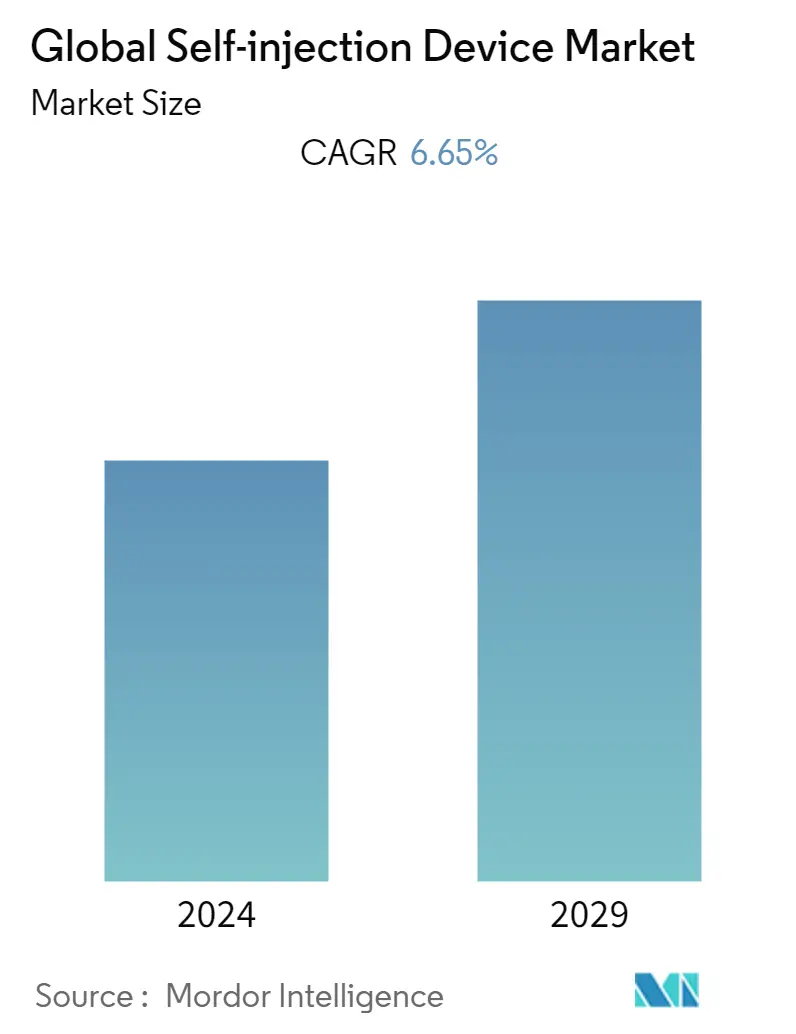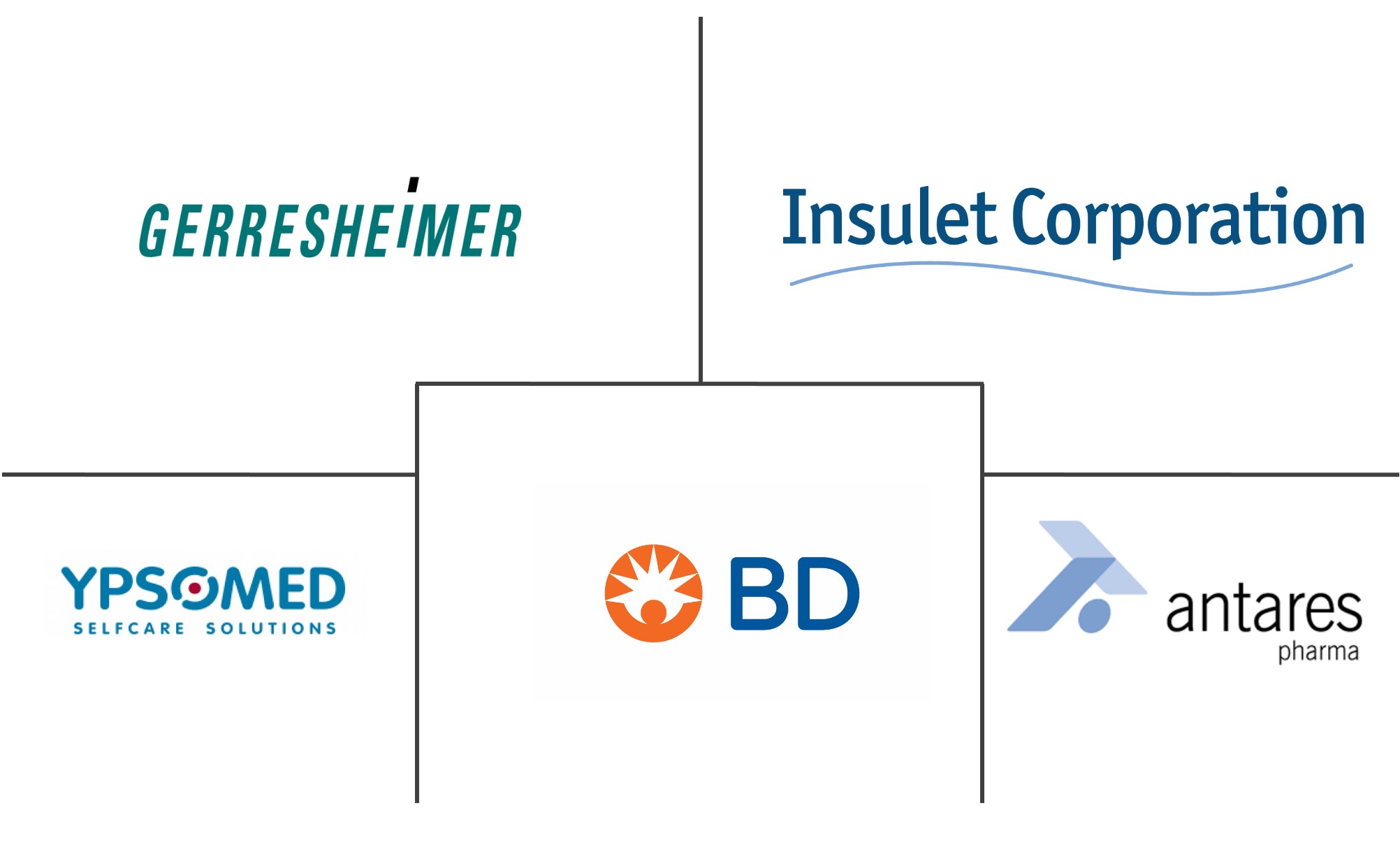Market Size of Global Self-injection Device Industry

| Study Period | 2021 - 2029 |
| Base Year For Estimation | 2023 |
| Forecast Data Period | 2024 - 2029 |
| CAGR | 6.65 % |
| Fastest Growing Market | Asia Pacific |
| Largest Market | North America |
Major Players
*Disclaimer: Major Players sorted in no particular order |
Need a report that reflects how COVID-19 has impacted this market and its growth?
Self-Injection Device Market Analysis
The self-injection devices market is expected to register a CAGR of 6.65% over the forecast period.
The COVID-19 pandemic had an impact on the self-injection devices market as the requirement for self-injectable devices and mass vaccination witnessed a rise since the outbreak of the disease. The threat of getting exposed to COVID-19 had urged patients, particularly those suffering from chronic ailments to opt for self-administration of medication such as self-injection devices at home for easy use. Healthcare professionals kept the healthcare properties free for COVID-19 victims and patients with a need for acute care. This generated the demand for self-injection devices such as wearable injectors. Significantly, the COVID-19 vaccines will increase the demand for injectable devices and the pandemic has also shown the benefit of self-use devices as well as connected devices. Post-pandemic there may be a rise in upcoming innovation in devices and pharma manufacturers will progressively collaborate to use self-injection devices in combination with other digital assets such as apps, phones, and personal computers. Eventually, this will bring the patient into far greater control of their care.
The major factors boosting the growth of the self-injection devices market are the growing prevalence of chronic diseases and the benefits that lead to a rise in demand for self-injection.
Self-injection devices allow patients with chronic diseases to gain control of their treatment schedule and their treatment setting, thus allowing greater independence and freedom in their social, domestic, and professional lives. Self-injection may also offer psychological benefits over administration by healthcare professionals, including improved self-esteem. Removing the need to attend a clinic or hospital for regular injections also brings economic benefits to both the patient and the healthcare system. This economic benefit has been the major growth-driving factor for this market.
Major chronic diseases such as cancer, cardiovascular diseases, chronic lung disease, stroke, Alzheimer's, diabetes, and chronic kidney disease are on the rise all over the world, has also helped the growth as self-injections have applications in recovery from these illnesses. Cancer is a leading cause of death all around the world, accounting for around 10 million deaths in 2020. According to the GLOBOCAN 2020 report, the total number of people in the world affected by cancer in 2020 accounts for around 19,292,789 cases. The number is estimated to rise to 28,887,940 cases by 2040. The increasing prevalence of chronic diseases is expected to add to the market growth, owing to the increase in drug delivery applications.
The recent product launches by major key market players are also adding to the growth of the studied market. For instance, in September 2022, Owen Mumford Pharmaceutical Services launched its new Aidaptus auto-injector platform that has a patient-centric design with automatic needle insertion that provides a simple and consistent user experience. Moreover, in October 2021, Ypsomed introduced the world's first autoinjector with integrated connectivity. It connects the SmartPilot, a networked reusable attachment to the YpsoMate autoinjector for incorporating the auto-injector into a digital therapy management system.Such activities are likely to add to the growth of the market over the forecast period.
However, stringent regulations for approval from regulatory authorities and a lack of awareness of such devices in developing and underdeveloped economies have been restraining the growth of this market.
